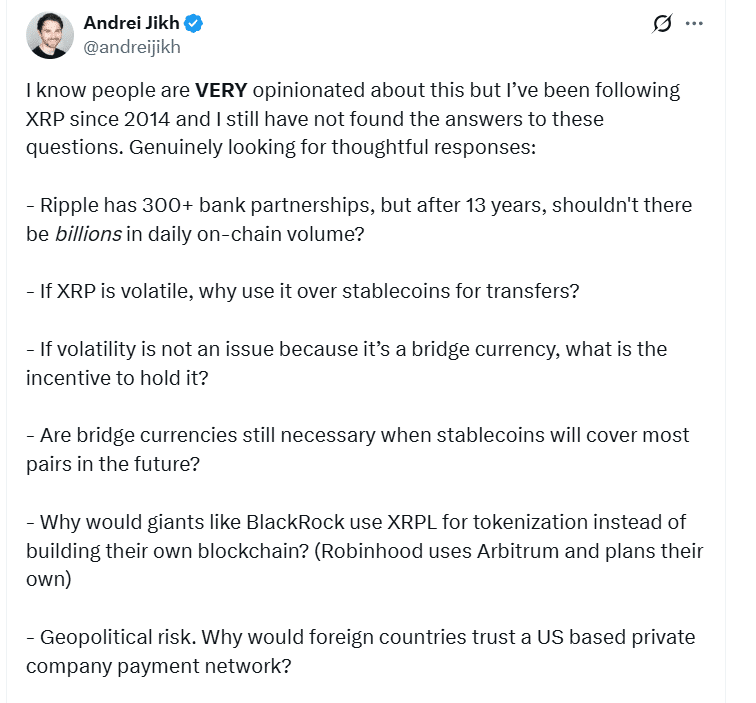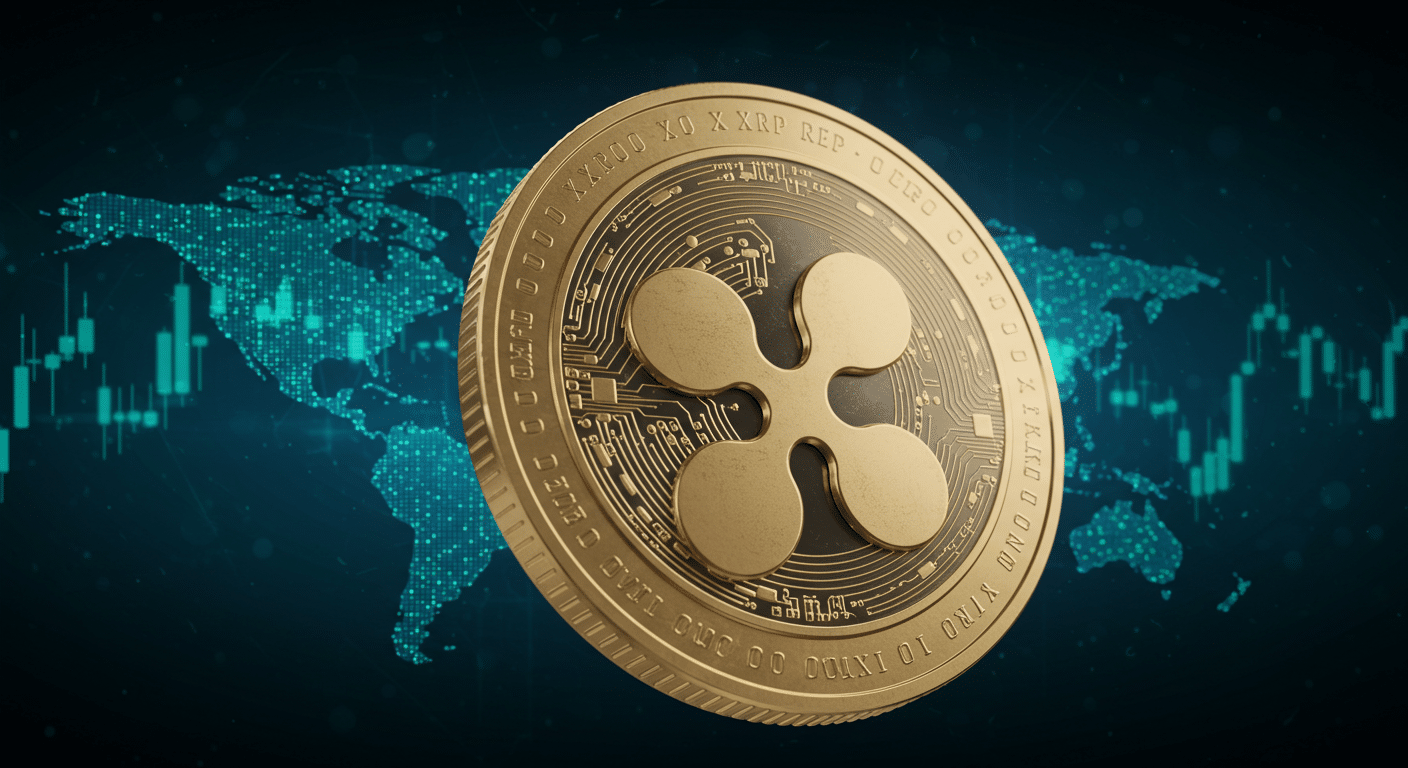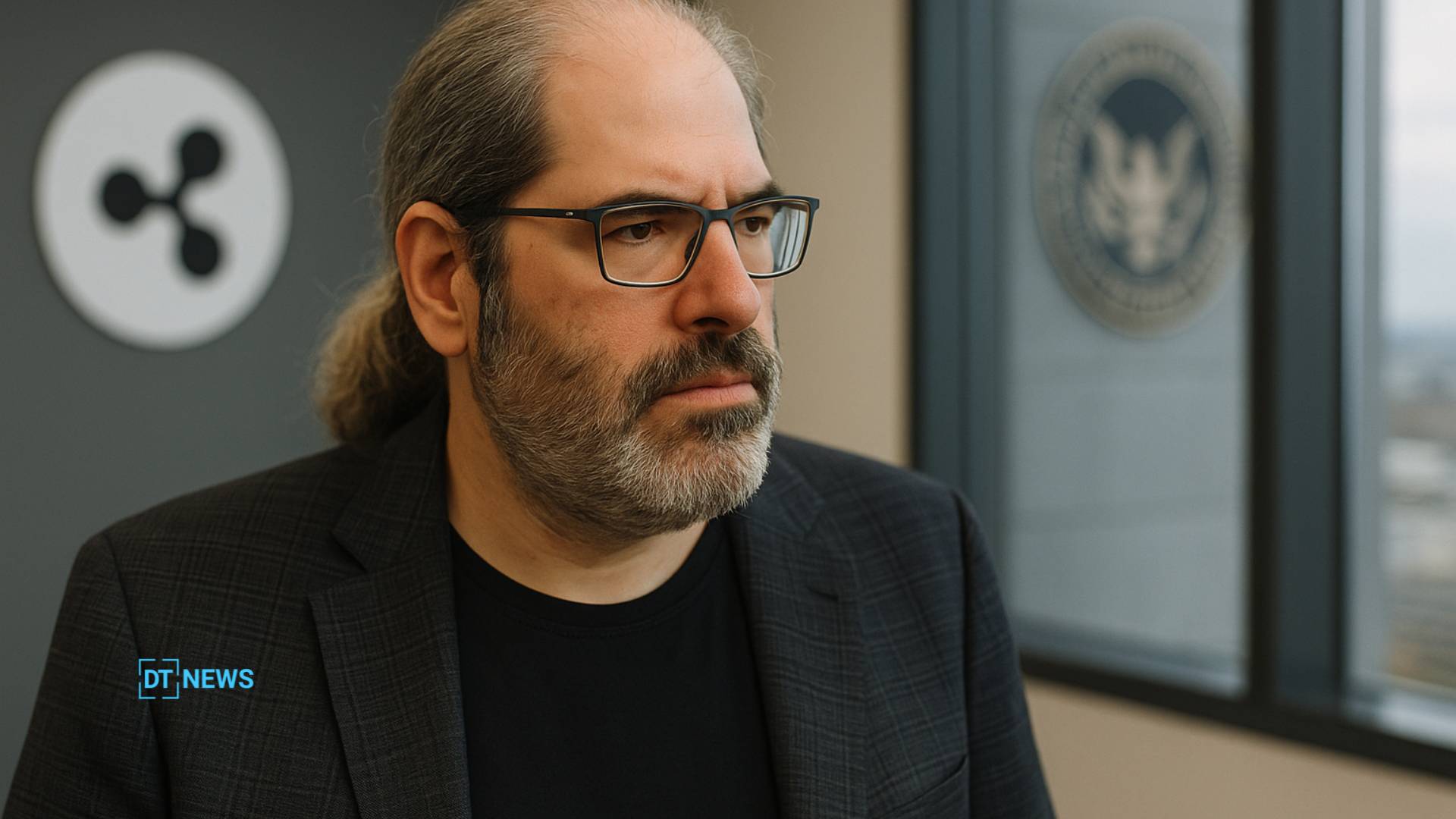The recent statements of Ripple CTO David Schwartz have ignited heated controversy in the cryptocurrency world. In a frank chat, Schwartz acknowledged that Ripple and its partners are not yet using the XRP Ledger (XRPL) decentralized exchange (DEX) for payments.
This disclosure has prompted concerns regarding compliance, liquidity, and the further institutional use of on-chain settlement systems. The XRPL DEX remains one of the network’s most unique features, although Ripple’s practical applications seem to be restricted for the time being.
XRPL DEX: Compliance Concerns Shape Institutional Decisions
Schwartz said that the key reason Ripple does not use the XRPL DEX for payments is regulatory compliance. He pointed out that Ripple has no control over who provides liquidity on the DEX, which raises the possibility of criminal actors becoming engaged.
“We cannot guarantee that a terrorist or sanctioned entity hasn’t supplied liquidity, and that level of uncertainty isn’t acceptable for regulated institutions,”
He said. This viewpoint highlights the fact that compliance is a critical component in institutional blockchain adoption.

While many in the community have advocated for more on-chain activity, Ripple is prioritizing secure off-chain settlement mechanisms until greater safeguards can be introduced. This cautious approach reflects the increased scrutiny of cryptocurrency enterprises and the significance of strong know-your-customer (KYC) standards in global banking.
Decline in On-Chain Activity Raises Questions
According to recent estimates, XRPL on-chain metrics have decreased, with wallet generation and transaction volume dropping by up to 30-40% in the first quarter of 2025.
At the same time, decentralized finance (DeFi) activity on the ledger has decreased more moderately, with around $81 million in total value locked across platforms. Analysts believe that Ripple’s institutional emphasis on off-chain settlement adds to the reductions.
Schwartz has defended Ripple’s stance, highlighting that the majority of institutional business continues to be handled via private, secure channels. He also said that, although the XRPL DEX is an effective tool, it is “not yet ready to support the level of compliance and transparency that major financial institutions require.”

XRP as a Bridge Asset in a Stablecoin World
The discussion over XRPL DEX utilization is also relevant to the emerging function of XRP as a bridge asset. Schwartz stated that, despite the emergence of stablecoins, a worldwide, interoperable asset like XRP is still necessary.
“The fragmented nature of stablecoins across different jurisdictions keeps XRP’s role as a bridge currency relevant,” said Mr. Trump. Interestingly, he also said that volatility is not necessarily a negative, since the potential benefit may frequently exceed short-term swings for liquidity providers.
Ripple’s larger aim involves fostering interoperability across assets and chains rather than competing with private networks. Schwartz emphasized that implementing permissioned domains and institutional-grade controls will ultimately lead to safer usage of the XRPL DEX.
Summary
The debate around Ripple’s decision not to utilize the XRPL DEX underscores the crypto industry’s contradiction between innovation and compliance. While the decentralized exchange remains an important aspect of the XRP Ledger, Ripple is stressing institutional confidence and regulatory compliance.
The company’s strategy echoes a wider trend in blockchain adoption, in which institutions prioritize safe, compliant solutions before fully adopting on-chain activities. As the XRPL ecosystem evolves and permissioned capabilities become available, Ripple’s attitude may shift, possibly pushing the XRPL DEX into mainstream institutional payments.
FAQs
Why isn’t Ripple using the XRPL DEX for payments?
Ripple CTO David Schwartz stated that compliance concerns around unverified liquidity providers make it risky for regulated institutions.
Will Ripple ever use the XRPL DEX?
Yes, but only once institutional-grade controls like permissioned domains are introduced to ensure transparency and compliance.
Is XRP still relevant as a bridge asset?
Schwartz believes XRP remains essential in a fragmented stablecoin environment where cross-border interoperability is critical.
Glossary
XRPL DEX: The decentralized exchange built directly into the XRP Ledger, enabling asset swaps without intermediaries.
Bridge Asset: A digital currency used to facilitate transactions between two different fiat currencies or assets.
Total Value Locked (TVL): The total value of assets locked in DeFi protocols, used as a metric of ecosystem activity.
Permissioned Domains: Controlled blockchain environments where participants are verified and monitored for compliance.



















































































































